Why India’s capital is being suffocated by toxic smog again: ‘We know it chokes Delhi, but we’re helpless’
Deadly air pollution has become an annual hazard in northern India, but there were hopes for change after political upheaval in Punjab. But even more farm fires are filling the sky with particles, as Arpan Rai reports from a landscape up in flames

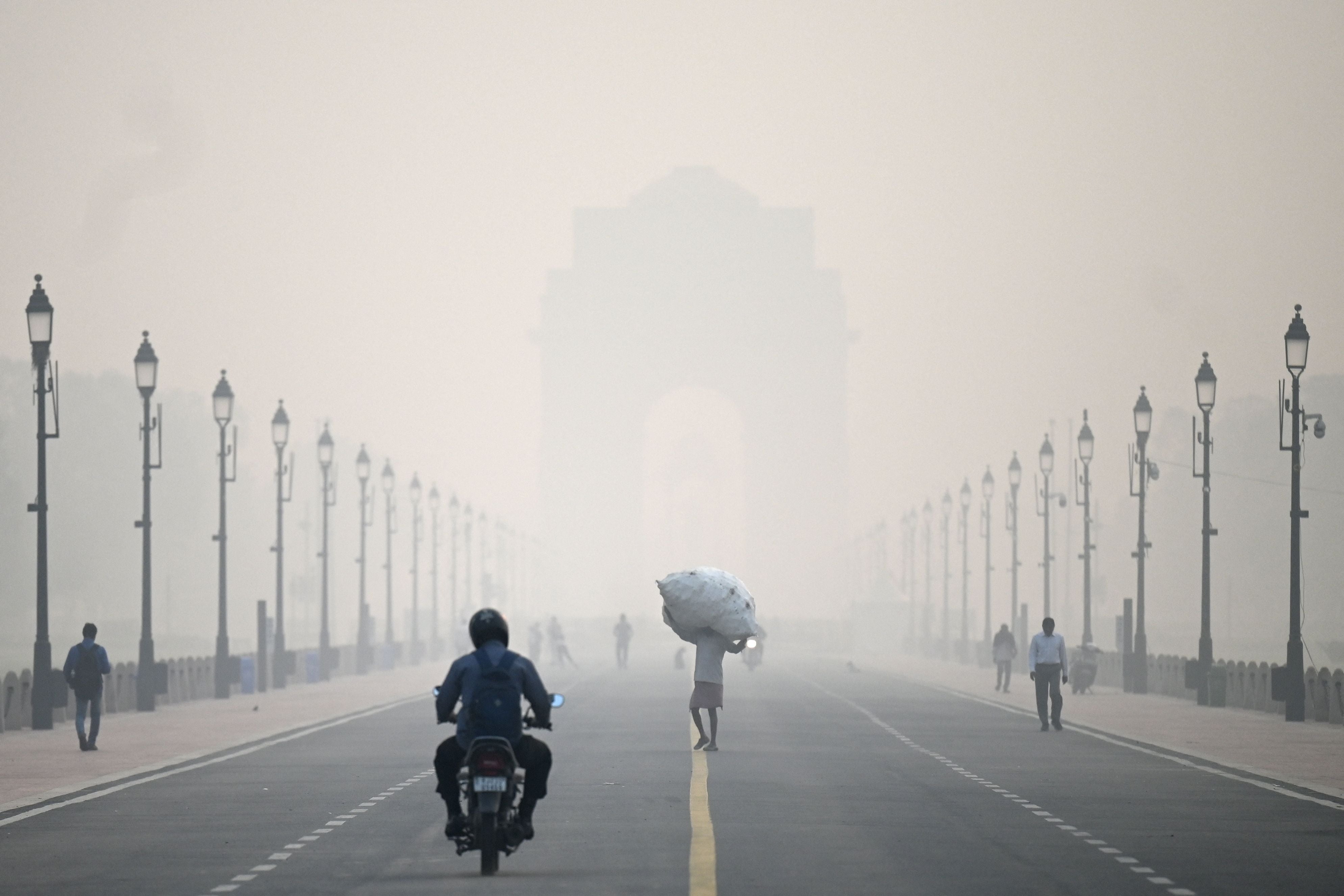
It turns out that the arrival of an air pollution apocalypse was inevitable. After a Diwali festival season that saw relatively modest pollution – air quality in “only” the “poor” or “very poor” categories – Delhi has been transformed into what one politician likened to a “gas chamber”, with schools closing and workers urged to stay at home.
This city of more than 30 million is once again breathing the world’s worst air, with monitors across the metropolis repeatedly showing Air Quality Index (AQI) readings in the worst category of “severe”, meaning prolonged exposure can harm even the healthy and has serious impacts for those with pre-existing conditions, the old and the very young.
Despite the deadly implications of Delhi’s air crisis, neither the cause nor the government’s responses to it are new this year, and any hopes that political upheaval in the past 12 months might bring about a positive change have been dashed.
To investigate one of the main causes of the crisis, The Independent travelled from Delhi along the Grand Trunk Road – part of India’s great Silk Route, spanning 1,500 miles, which pierces the heart of the northern Indian plains and into neighbouring Punjab.
The view from what is now National Highway 44 is bleak, a horizon set ablaze to both sides of this historic route: the season of farm fires is in full swing.
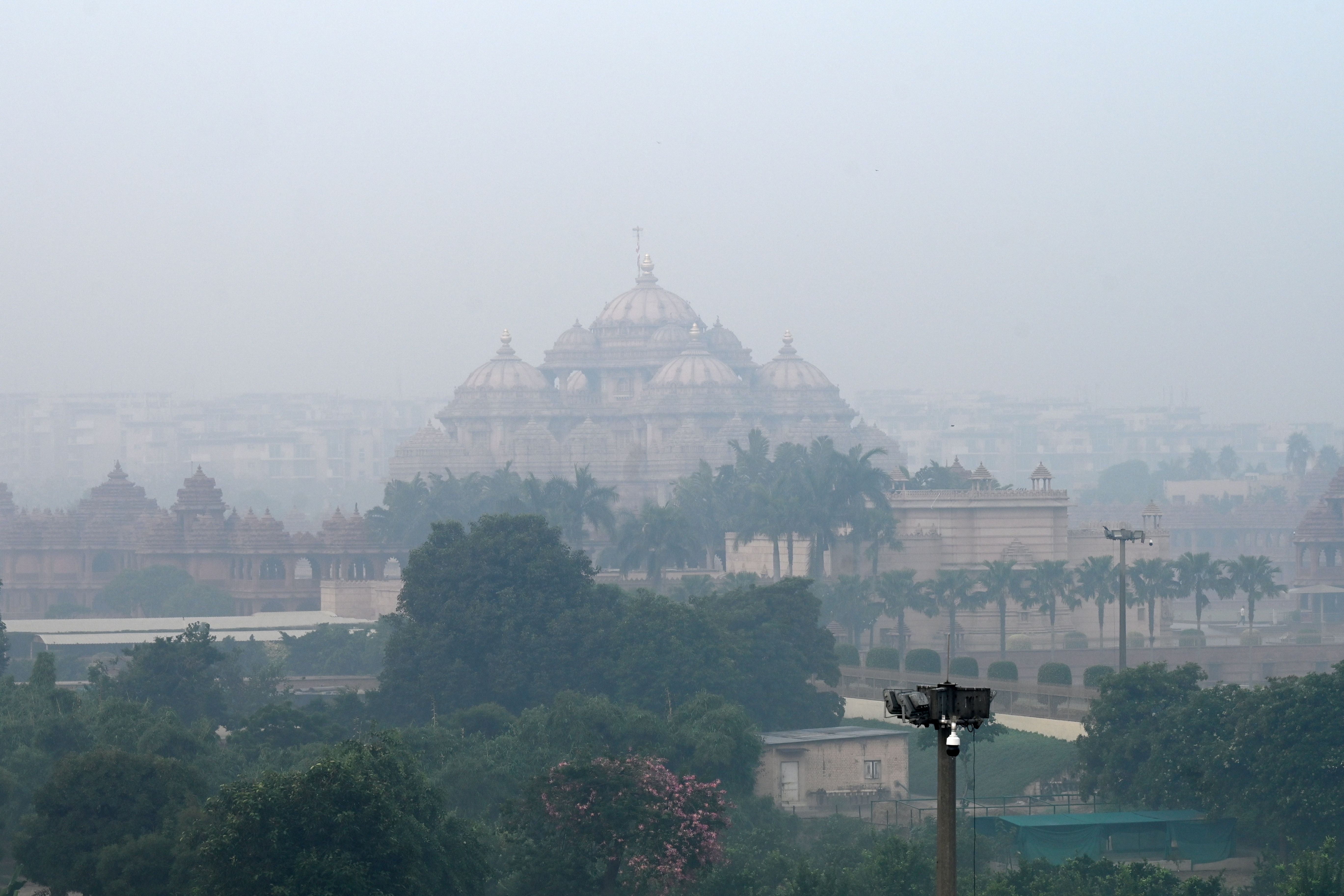
Around this time each year the breadbasket states of Punjab and Haryana are transformed into an apocolyptic wasteland, with the thick stubble left behind by harvested and dried rice fields burned away to make way for the next batch of crops.
It’s a practice that traces its origins back to when these states took on the noble task of feeding a starving nation, clearing the fields as quickly as possible so that the same land could produce two harvests in a single year. India might no longer be starving, but the stubble burning goes on, with thick white smoke billowing from every field, mile after mile.
Weather patterns lift this grey haze and carry it south and east to Delhi, where it mixes with heavy pollutants from the city’s own emission sources – vehicles, construction, industrial activity – to form a toxic cocktail. Hemmed in by the Himalayan mountain ranges to the east and a colder, stiller winter climate, the smog sticks around for months on end, typically clearing only with the arrival of warmer conditions in February.
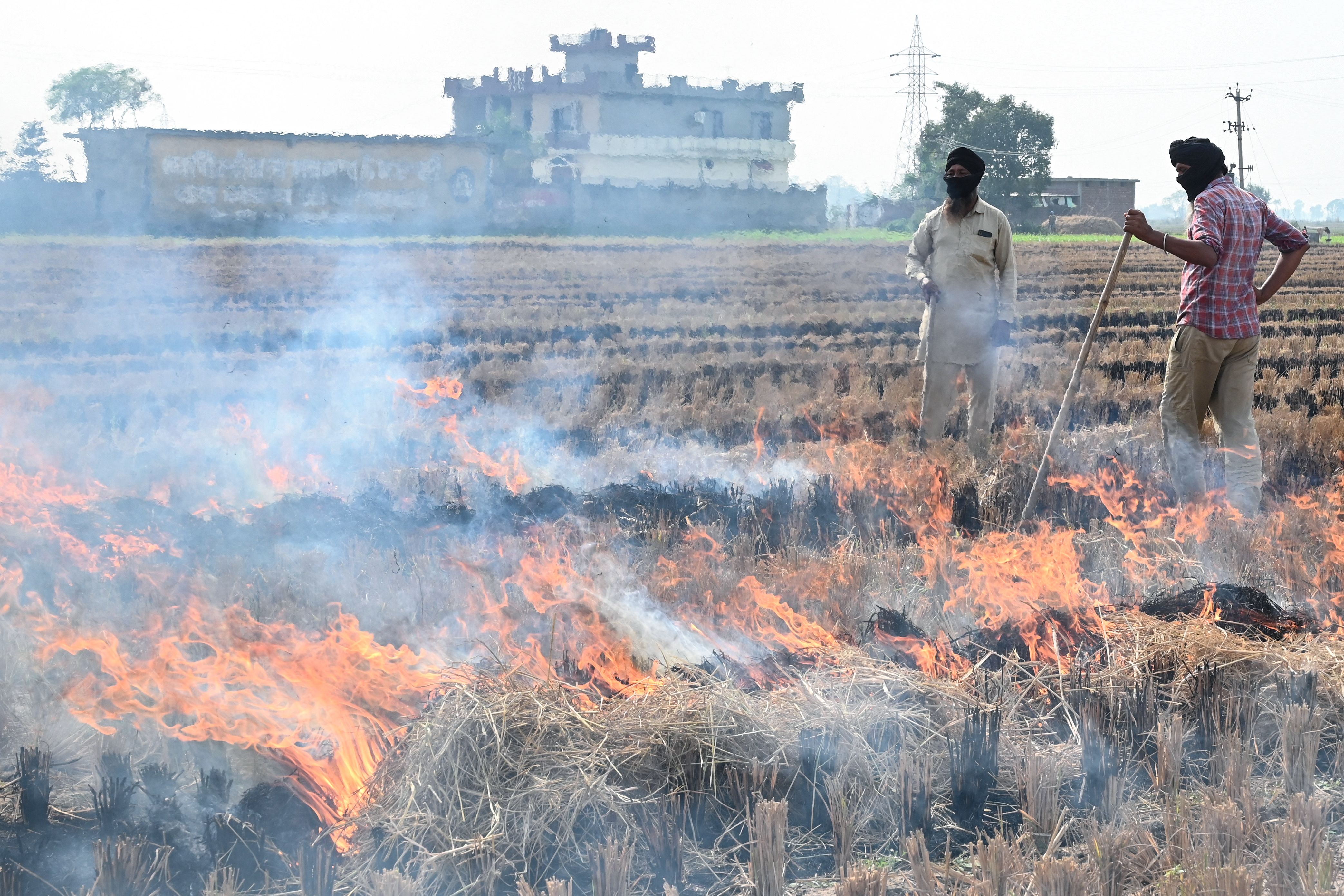
Studies vary on the exact contribution of each pollution source to the whole, but for years the Aam Aadmi Party (AAP) in power in Delhi has strongly admonished crop burning as the prime suspect. Attempts to ban the practice, and to fine farmers who do it, have evidently not been enforced – mismanagement by the parties in power of these other states, AAP says.
So the election victory of AAP in Punjab last year brought hopes of a change in trajectory, that the party could harmonise policies affectings farmers and city-dwellers to end the blame game and take action.
Far from stabilising, however, the situation has deteriorated. More than 16,000 farm fires were recorded this year between 15 September and 31 October, data from Punjab’s Remote Sensing Centre confirmed this week. There were 2,000 different fires burning just on Monday alone.
This has shot up from last year, when 13,124 stubble burning incidents were recorded in the same period.
‘We know it chokes Delhi’
Farmer Jagjit Singh in Patiala reverses his tractor out of the fields after inspecting the soil, ready for the next harvest.
He is one of the few who managed to purchase a 60-horsepower tractor capable of using the alternative crop-removing technology being pushed by the authorities here, thereby preventing him from burning away the rice straws. Many cannot afford to do so, including Singh’s friend in a nearby field, who instead decided that day was the best to set his land ablaze.
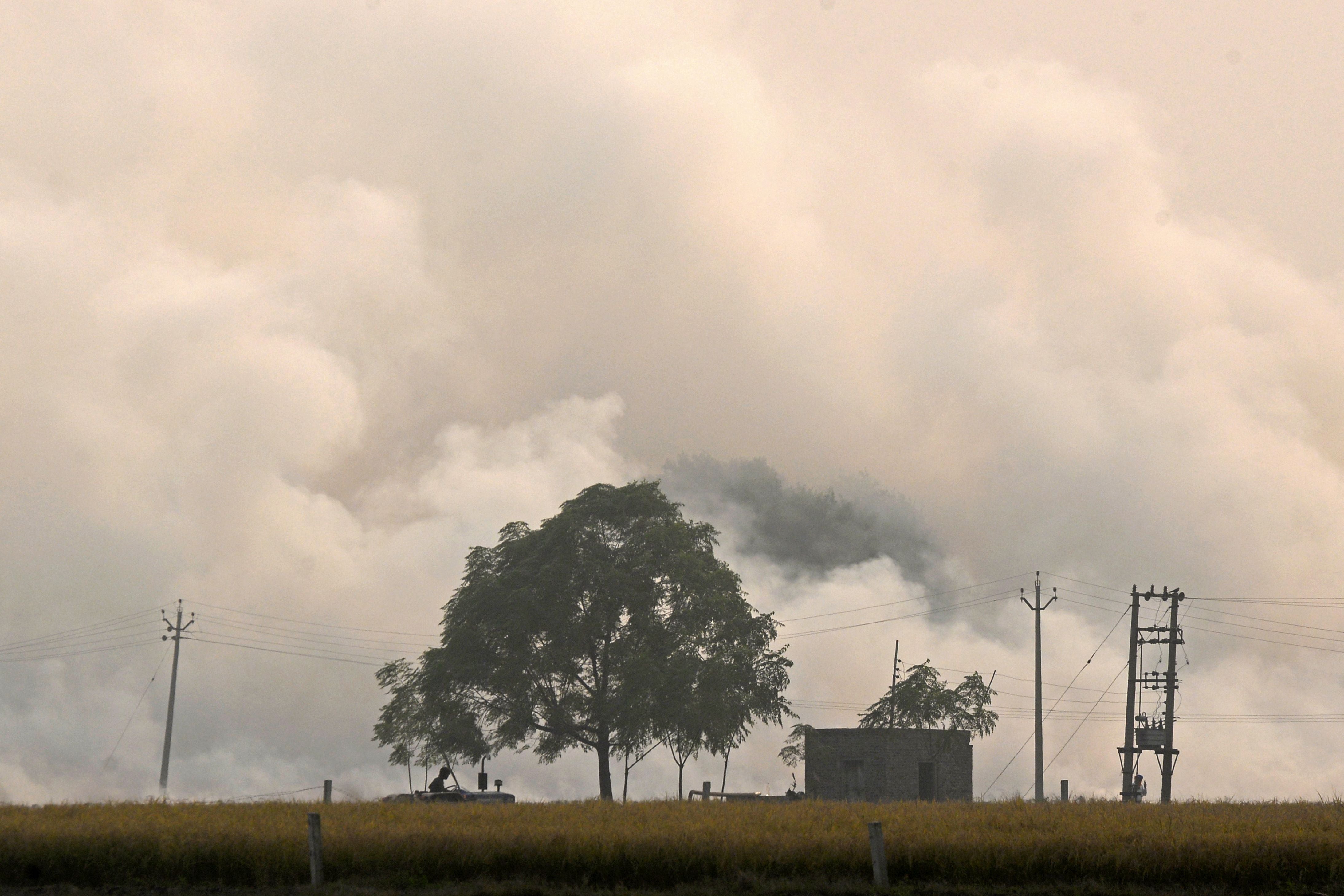
“There are advertisements and conversations in Delhi and we have also heard of these solutions. But these are easier said than done. My friend has not been able to access or rent these machines,” Singh says.
In the end it’s simply easier, faster and cheaper to torch the field and start sowing again within the next few days, he says. “We know the fire chokes Delhi, but we’re helpless.”
Some 55 miles down the road, another farmer in Libra village in Ludhiana says he knows the impacts the crop-burning has on his fellow citizens, and expresses his anguish at the situation.
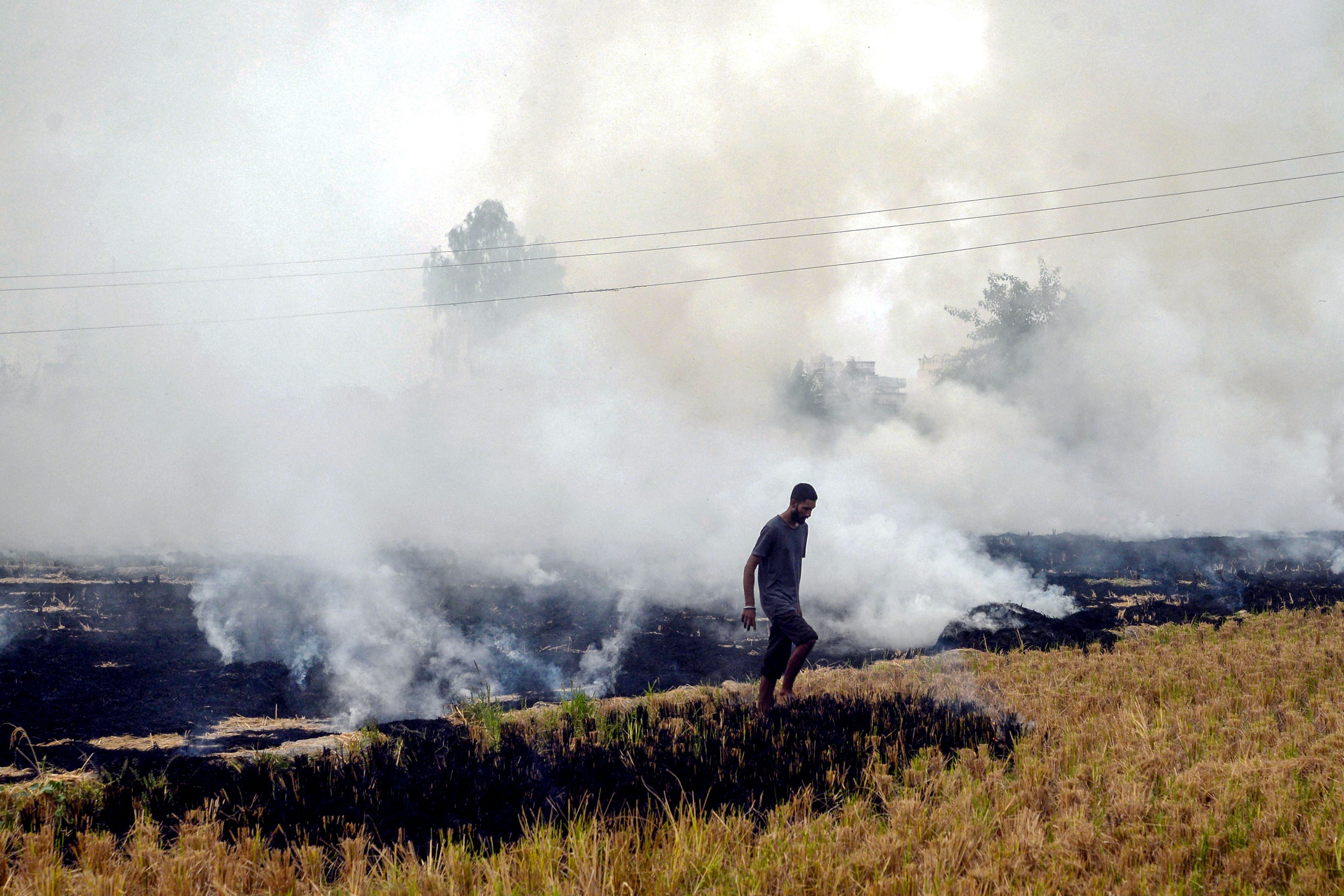
“To buy a tractor of 60 horsepower, I need to spend at least a million rupees [£10,490],” says the young man, who asks to remain anonymous, and who took up farming relatively recently in the absence of better job opportunities.
He explains that he and his friends cannot help but be aware of the nuisance of farm fires. It is announced every evening by local officials, requesting them not to burn the stubble, he says. The message has even been painted on the walls of houses in the village.
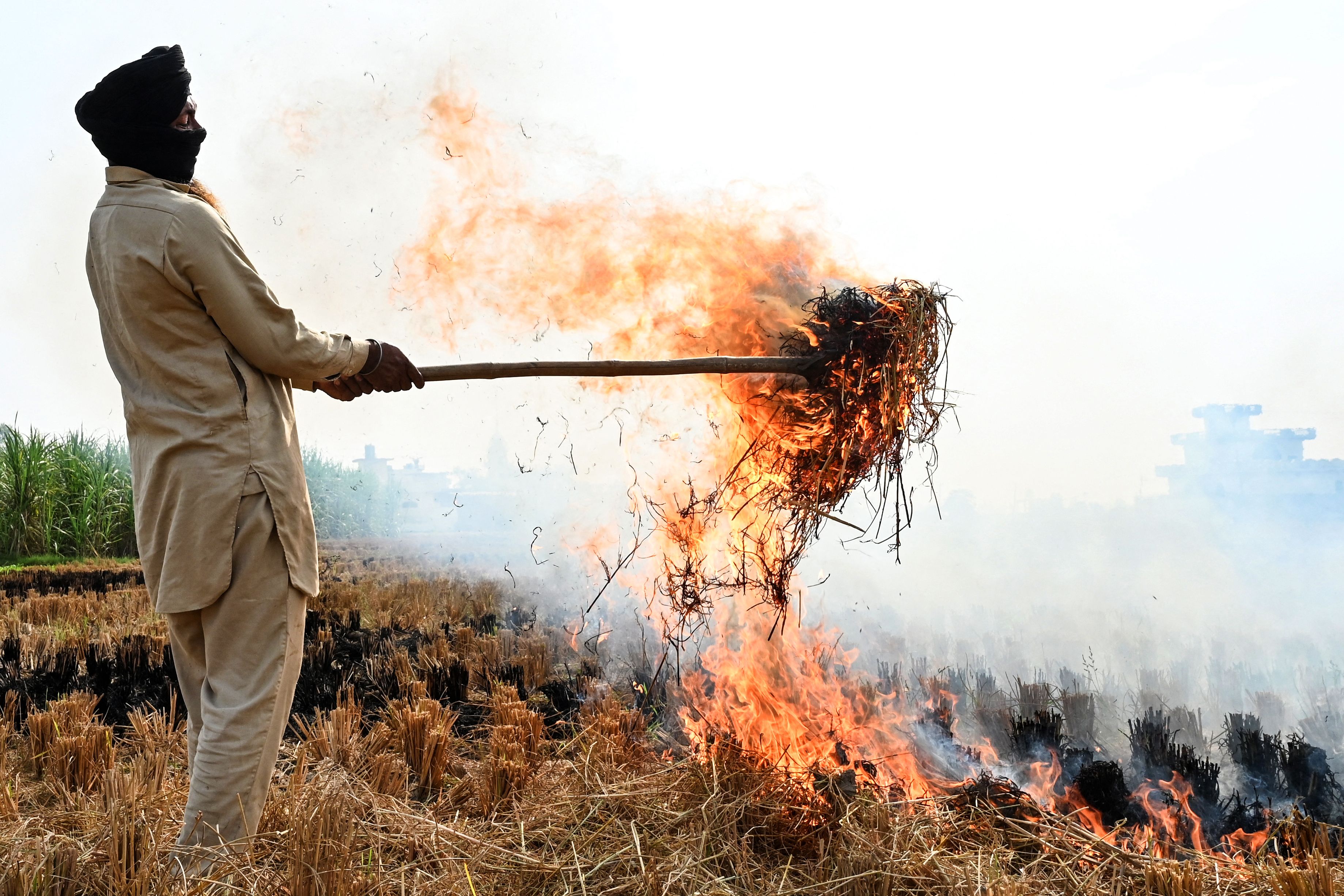
Government officials accept that the battle to prevent stubble burning this year has been lost, one Punjab official responsible for monitoring the farm fires situation tells The Independent, requesting anonymity. The prospect of even marginal success on this front will take at least three years, he suggests.
But even stopping the stubble burning overnight wouldn’t completely do away with Delhi’s smog. Taking Punjab and neighbouring Haryana together, studies show the fires contribute between 20 and 40 per cent of Delhi’s bad air, depending on the exact time of year.
To solve the situation would require progressively stricter measures across all Delhi’s polluting sectors as well, says Bhargav Krishna, a fellow at the Delhi-based Centre for Policy Research think tank – the kind of joined-up, long-term thinking that has been completely lacking so far.
Though it peaks in winter, Delhi’s air is far from perfect all year round. No city or country that has faced this kind of air quality crisis – whether London in the 1950s or Beijing in the 2010s – has overcome it by applying short-term, band-aid solutions, he says.
In transport, Krishna points out that officials have introduced new fuel emission standards for cars but haven’t done much for the diesel-guzzling heavy goods vehicles moving in and out of the capital. “In dust control we have measures that regulate large construction sites, but nothing really has been done for implementing those guidelines,” he says.
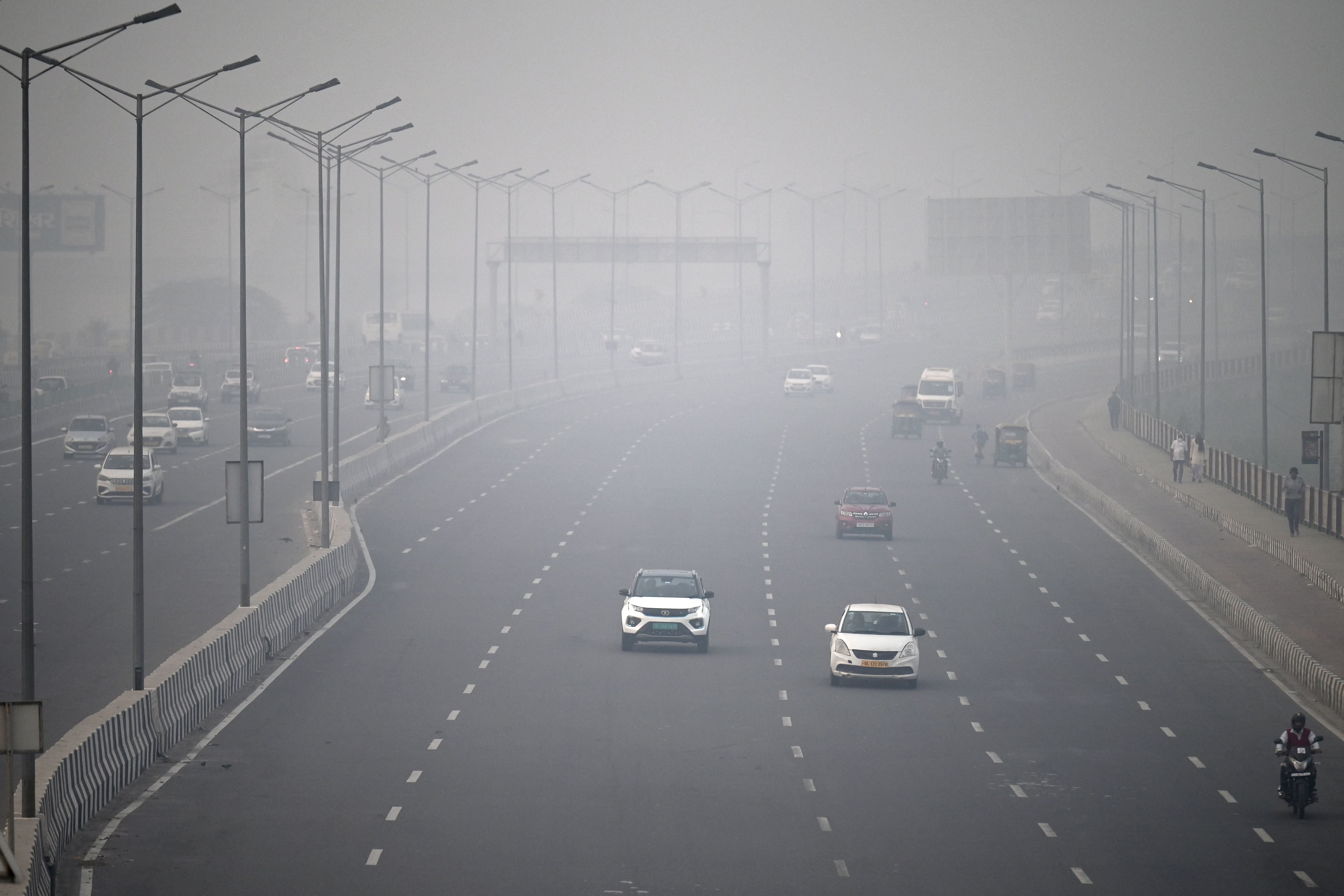
Technological advances in removing crop stubble might stop some farmers burning it off in the short term, he suggests, but what’s really needed is a cultural transition from the idea that every field must bear two harvests a year – what he calls the “paddy-wheat duopoly”.
This is also not just a problem faced by Delhi, Punjab and Haryana. Pollution is being produced across the Himalayan basin and, when carried by air currents, doesn’t stop at state or national borders.
Farmers ‘betrayed’
In neighbouring Pakistan, Abid Omar observes these patterns for the Pakistan Air Quality (PAQ) monitoring project. “The border between the two nations is just 70 years old,” he tells The Independent from Karachi, and India and Pakistan share many of the symptoms and cause of an air catastrophe – from stubble burning to poor enforcement of emissions standards by authorities.
Pakistan has also tried to ban stubble burning, but Nasa satellite maps show red dots flaring all along the country’s eastern border with India. These will only proliferate between now and December, Omar says.
It’s a broader example of how piecemeal policies can never solve the air quality of an entire region, says Krishna, who also co-founded the Care for Air non-profit. Yet, instead of an overarching collaboration, action is being taken “on a state-by-state level at the direction of the courts”, he says.
“The pollution is going to find its way back here again sooner or later. All the states – Delhi, Punjab, Haryana and Uttar Pradesh – will have to implement the same strategy. That is what it effectively means to work under one airshed,” he says.
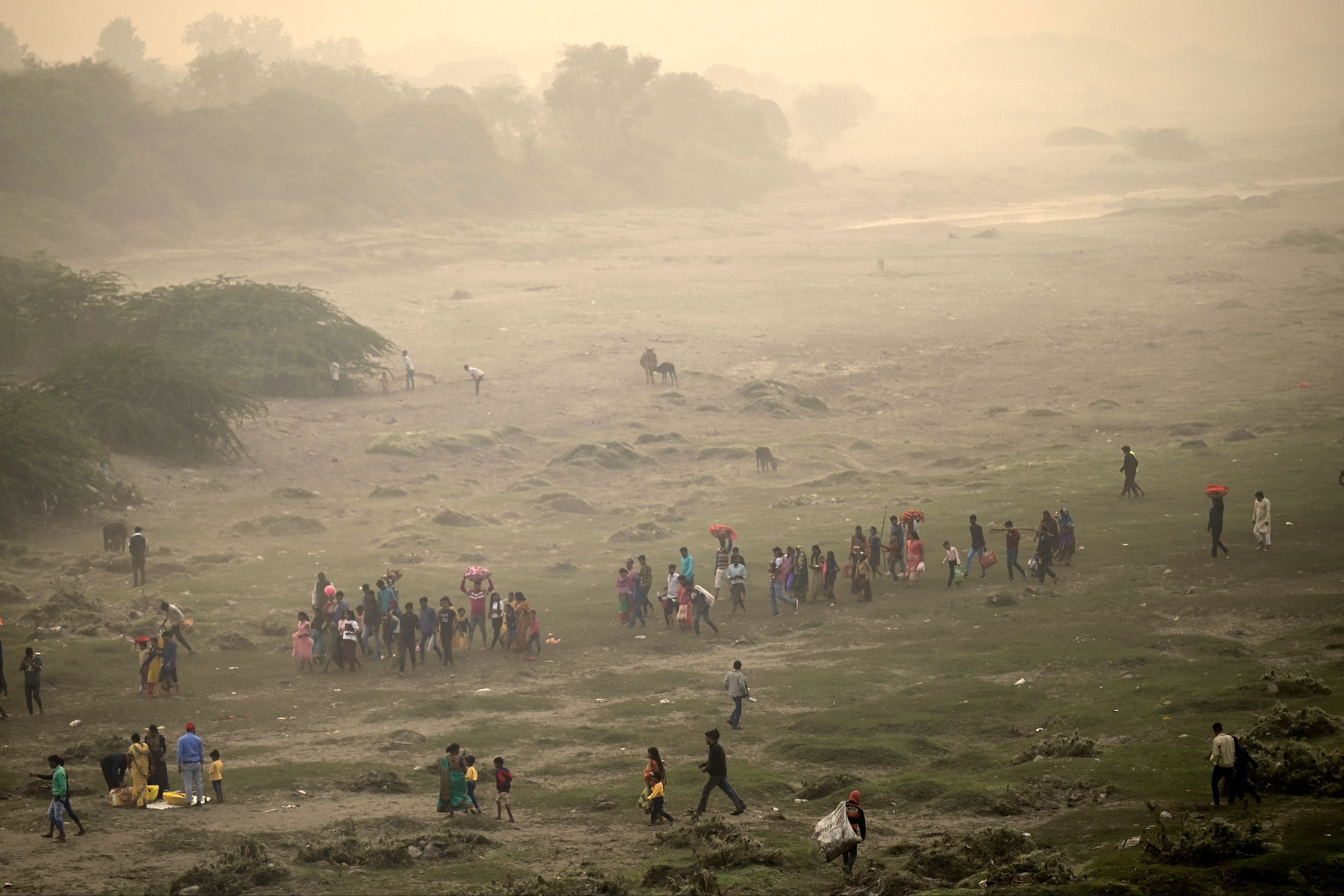
The prospect of such a collaboration seems distant. On Wednesday, the AAP-led Delhi government addressed the city’s soaring AQI numbers not by proposing solutions, but by attacking the federal government of Narendra Modi’s BJP for blaming and therefore “betraying” farmers.
Delhi’s environment minister, Gopal Rai, held a press conference where he argued that Mr Modi wanted to get back at farmers for the huge protests last year that ultimately derailed the BJP’s planned agricultural reforms.
“The BJP is blaming farmers for burning stubble and wants FIRs [police chargesheets] to be filed against them. They should stop abusing farmers, stop seeking revenge [against] them,” Rai said. Calling for action, he claimed Delhi could end the misery of millions if only it had the support of the BJP state governments in Haryana and Uttar Pradesh. What that would look like in practice, however, remains deeply unclear.






Join our commenting forum
Join thought-provoking conversations, follow other Independent readers and see their replies
Comments